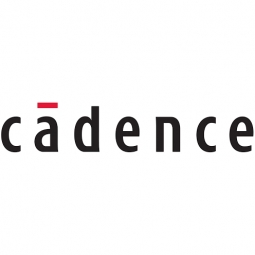Technology Category
- Analytics & Modeling - Digital Twin / Simulation
- Sensors - Temperature Sensors
Applicable Industries
- Automotive
- Semiconductors
Applicable Functions
- Product Research & Development
- Quality Assurance
Use Cases
- Manufacturing Process Simulation
- Virtual Reality
Services
- System Integration
- Testing & Certification
About The Customer
Freescale Semiconductor, Inc. is a leading provider of embedded processing solutions for various markets including automotive, consumer, industrial, and networking. The company's technologies encompass microcontrollers, microprocessors, sensors, and analog ICs. With its headquarters in Austin, Texas, Freescale Semiconductor has design, research and development, manufacturing, and sales operations in over 20 countries. The company's analog and sensors division primarily manages analog components, despite the rapidly increasing use of digital logic in every new project. The division's analog engineers, who have limited expertise in design verification languages, play a critical role in executing top-level verification of mixed-signal systems on chip (SoCs).
The Challenge
Freescale Semiconductor, a leader in embedded processing solutions, faced a significant challenge in improving the efficiency of top-level verification of mixed-signal Systems on Chip (SoCs). The company's analog and sensors division, which primarily manages analog components, was grappling with the increasing use of digital logic in new projects. Most analog engineers had limited expertise in design verification languages, yet their involvement in executing top-level verification of mixed-signal SoCs was crucial. The traditional testbenches created by analog engineers were based on schematic entry and multiple configuration views, and relied on waveform inspection. However, advanced verification methodologies were typically digital-centric, command-line driven, and based on object-oriented languages such as SystemVerilog. This posed a significant challenge in bridging the gap between analog and digital verification methodologies.
The Solution
To address this challenge, Freescale Semiconductor's verification team developed a digital-centric verification environment using a domain-specific language based on pre-processor macros and SystemVerilog APIs. This environment allowed analog engineers to perform self-checking top-level simulations. With Verilog configurations, users could select the design under test (DUT) abstraction required for each test case. The team then integrated the Universal Verification Methodology (UVM) into the design verification environment of their next-generation battery-monitoring IC. Freescale Semiconductor used Cadence® Virtuoso® Analog Design Environment to implement its UVM/mixed-signal methodology. The team also utilized the new unified netlister technology in Virtuoso Analog Design Environment, which accelerated the process of netlisting and elaborating a simulator snapshot with Cadence Virtuoso AMS Designer Simulator. They used the Cadence SimVision Debug environment in Cadence Incisive® Enterprise Simulator to debug their mixed-signal designs and the Cadence Incisive vManager™ solution for better coverage and traceability.
Operational Impact
Quantitative Benefit

Case Study missing?
Start adding your own!
Register with your work email and create a new case study profile for your business.
Related Case Studies.

Case Study
Integral Plant Maintenance
Mercedes-Benz and his partner GAZ chose Siemens to be its maintenance partner at a new engine plant in Yaroslavl, Russia. The new plant offers a capacity to manufacture diesel engines for the Russian market, for locally produced Sprinter Classic. In addition to engines for the local market, the Yaroslavl plant will also produce spare parts. Mercedes-Benz Russia and his partner needed a service partner in order to ensure the operation of these lines in a maintenance partnership arrangement. The challenges included coordinating the entire maintenance management operation, in particular inspections, corrective and predictive maintenance activities, and the optimizing spare parts management. Siemens developed a customized maintenance solution that includes all electronic and mechanical maintenance activities (Integral Plant Maintenance).
Case Study
KINESYS Semiconductor Factory Automation Software
KINESYS Software provides both Integrated Device Manufacturer (IDM) and Original Equipment Manufacturer (OEM) customers world-class software products and solutions for advanced wafer and device traceability and process management. KINESYS offers state of the art database technology with a core focus on SEMI standards. KINESYS’ challenge was to make back-end processing failure-free and easy to use for clients while supporting licensing models more adaptable to changing industry needs.

Case Study
Monitoring of Pressure Pumps in Automotive Industry
A large German/American producer of auto parts uses high-pressure pumps to deburr machined parts as a part of its production and quality check process. They decided to monitor these pumps to make sure they work properly and that they can see any indications leading to a potential failure before it affects their process.










